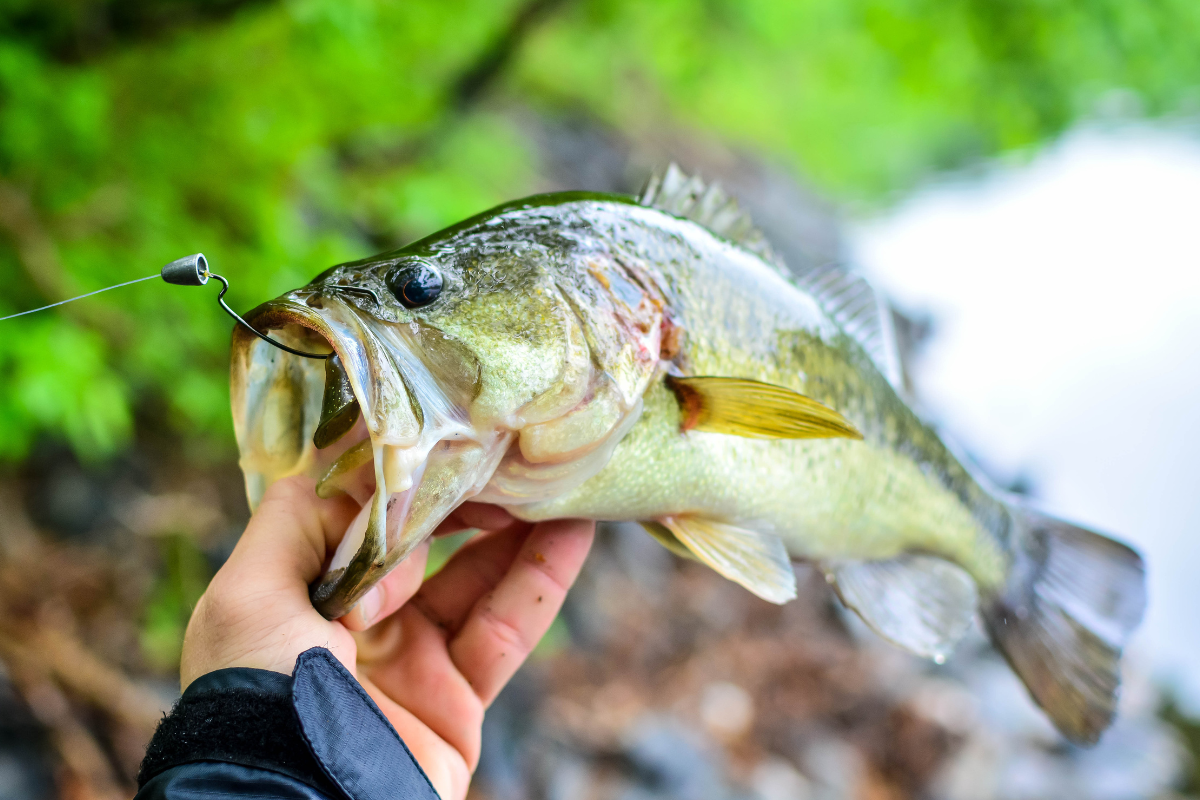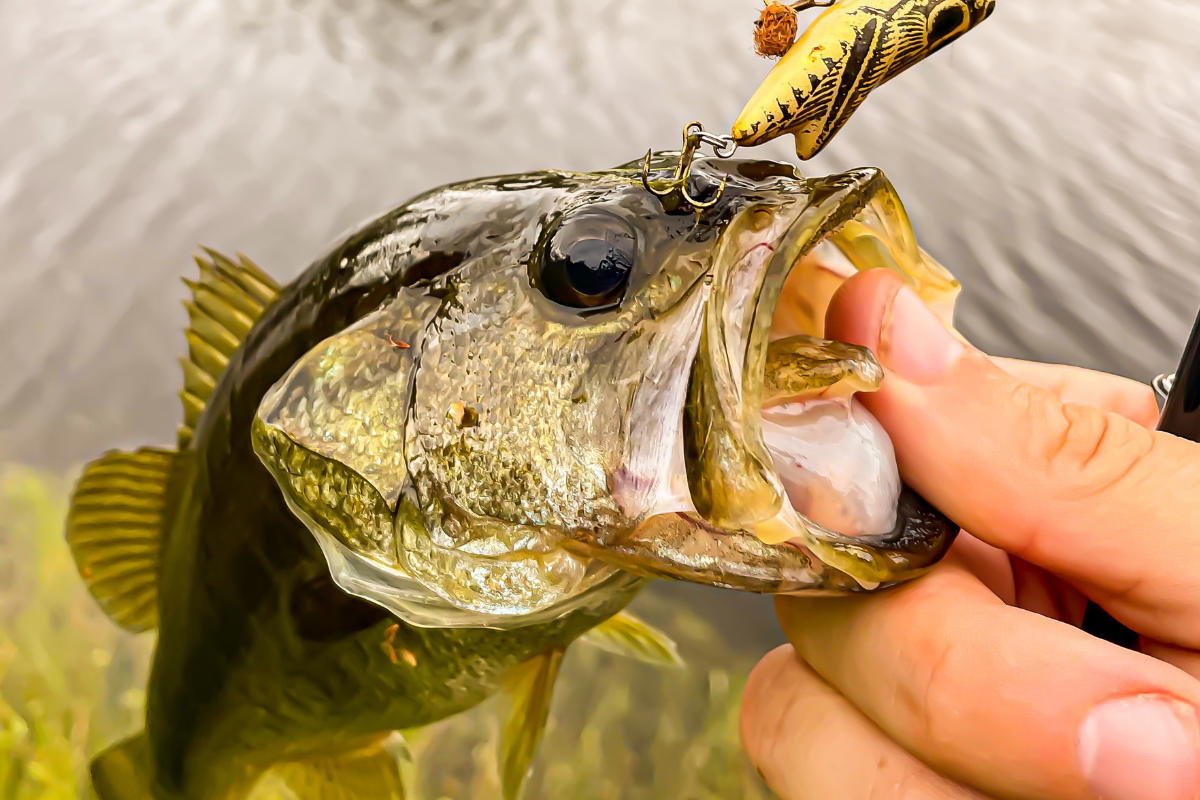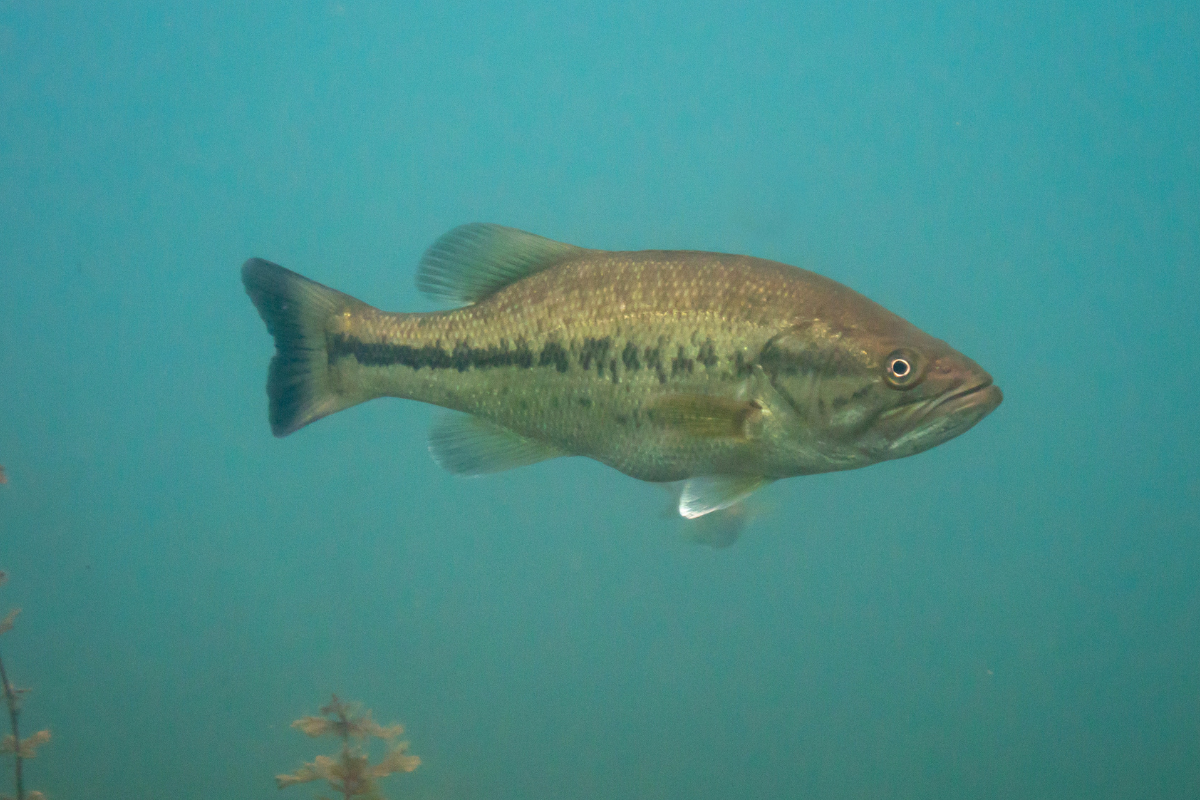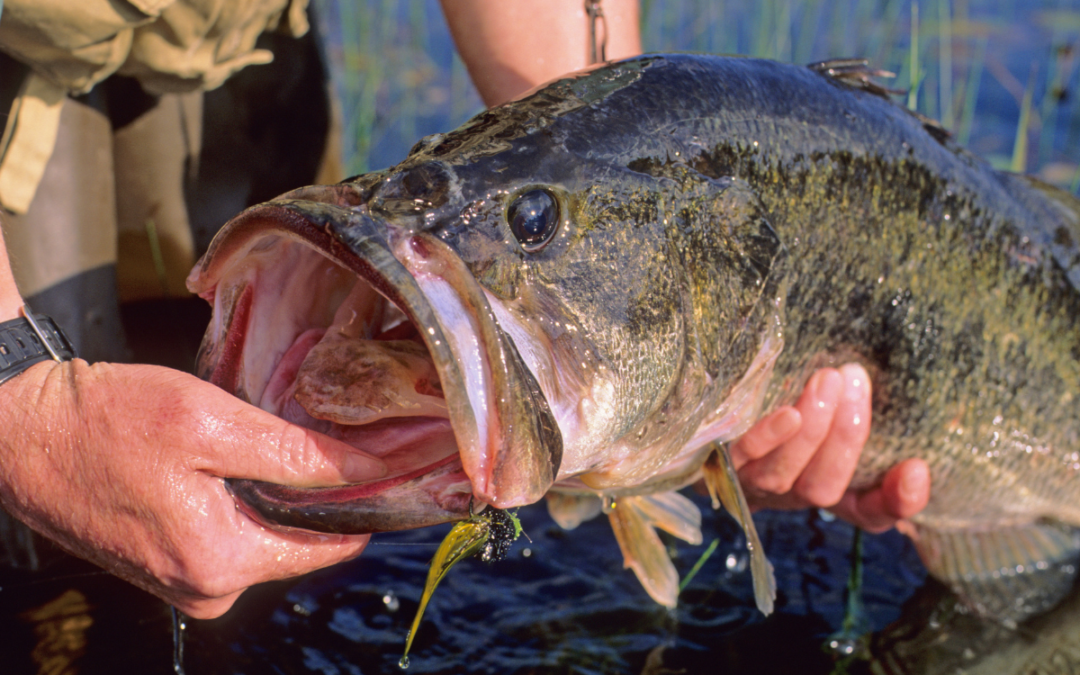Largemouth bass (Micropterus salmoides) are one of the most popular freshwater game fish in North America. Anglers often distinguish between the Northern Largemouth Bass (Micropterus salmoides salmoides) and the Florida Largemouth Bass (Micropterus salmoides floridanus), as well as a hybrid of the two — known as the Tiger Bass. Each of these largemouth bass subspecies varieties offers unique characteristics that make them appealing to different fishing enthusiasts and environments. In this blog, we will delve into the distinguishing features, habitats, behaviors, and angling appeal of these three types of largemouth bass.

The Northern Largemouth Bass Subspecies
Northern Largemouth Bass (Micropterus salmoides salmoides) typically have a robust, elongated body with a dark green coloration on the back, fading to a lighter, whitish belly. They are characterized by their large mouths, which extend past the eyes, and a distinct lateral line running along their sides.
Native to the central and eastern United States, Northern Largemouth Bass are adaptable to various freshwater environments. They thrive in lakes, rivers, reservoirs, and ponds with abundant vegetation and clear water. They prefer water temperatures between 60°F and 80°F.
These bass are known for their aggressive feeding habits. They are opportunistic predators, feeding on a variety of prey, including smaller fish, crustaceans, and insects. Northern Largemouth Bass are particularly active during dawn and dusk, making these times ideal for fishing.
Northern Largemouth Bass are highly sought after by anglers due to their aggressive strikes and strong fighting abilities. They can be caught using various techniques, including topwater lures, spinnerbaits, and soft plastics. Their widespread distribution and adaptability make them accessible to many anglers across the United States.

The Florida Largemouth Bass Subspecies
Florida Largemouth Bass (Micropterus salmoides floridanus) are similar in appearance to their northern counterparts but tend to grow larger. They have a slightly darker coloration and a more pronounced lateral line. Their scales are also slightly larger.
As their name suggests, Florida Largemouth Bass are native to Florida and the southeastern United States. They prefer warm, vegetated waters and are commonly found in lakes, swamps, and slow-moving rivers. They thrive in water temperatures between 75°F and 85°F.
Florida Largemouth Bass exhibit similar feeding behaviors to Northern Largemouth Bass but are known to be slightly more temperamental. They are less tolerant of colder water temperatures and tend to be more challenging to catch during the cooler months.
Anglers prize Florida Largemouth Bass for their potential to reach impressive sizes. It is not uncommon for these bass to exceed 10 pounds, with some reaching over 20 pounds. Fishing for Florida Largemouth Bass often requires patience and skill, as they can be more elusive and wary of artificial lures.

The Tiger Largemouth Bass Subspecies
Tiger Bass are a hybrid created by crossing the Northern and Florida Largemouth Bass subspecies. They exhibit a blend of characteristics from both parent species, often showcasing the size potential of Florida Bass with the aggressive nature of Northern Bass. Their appearance can vary, but they generally have a robust body with a distinct lateral line and a combination of dark and light coloration.
Since they are a hybrid, Tiger Bass are typically found in managed fisheries and private lakes where they are intentionally stocked. They can adapt to a range of freshwater environments and are often introduced to improve the quality of the fishery.
Tiger Bass inherit the best traits from both parent species. They are known for their aggressive feeding habits, like Northern Bass, and can grow to substantial sizes similar to Florida Bass. This combination makes them formidable predators in their habitats.
The appeal of Tiger Bass lies in their hybrid vigor. Anglers enjoy targeting them because they offer the thrill of catching a large, hard-fighting fish that is more aggressive than pure Florida Bass. Their presence in managed fisheries often ensures a higher catch rate and a better overall fishing experience.
Which Largemouth Bass Subspecies is Best?
There are pros and cons to stocking each of the largemouth bass subspecies listed above. The Northern bass will be more suited for pond and lake owners in cooler regions, as the Florida bass tends to have a higher mortality in cooler climates — especially in younger fish.
However, the Florida bass will grow to a larger eventual size compared to the Northern bass. This is why southern pond and lake owners prefer the Florida bass, because it gives them a higher likelihood of growing trophy largemouth bass.
The hybrid Tiger bass offers the best of both worlds, combining the cold-tolerance of the Northern bass with the trophy size of the Florida bass. The downside with the Tiger bass is the hybrid vigor that is lost in subsequent generations. As a result, these may need to be restocked every 5-6 years.
Let Up Help with Your Pond!
If you’re in the south GA or north FL region and need help managing the fish populations in your pond, complete this form and we’ll contact you to schedule a time to meet.

